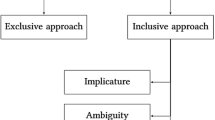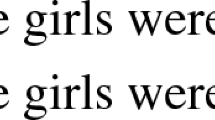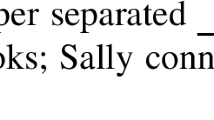Abstract
In this paper, we take a closer theoretical and empirical look at the linking elements in German N1+N2 compounds which are identical to the plural marker of N1 (such as -er with umlaut, as in Häus-er-meer ‘sea of houses’). Various perspectives on the actual extent of plural interpretability of these pluralic linking elements are expressed in the literature. We aim to clarify this question by empirically examining to what extent there may be a relationship between plural form and meaning which informs in which sorts of compounds pluralic linking elements appear. Specifically, we investigate whether pluralic linking elements occur especially frequently in compounds where a plural meaning of the first constituent is induced either externally (through plural inflection of the entire compound) or internally (through a relation between the constituents such that N2 forces N1 to be conceptually plural, as in the example above). The results of a corpus study using the DECOW16A corpus and a split-100 experiment show that in the internal but not external plural meaning conditions, a pluralic linking element is preferred over a non-pluralic one, though there is considerable inter-speaker variability, and limitations imposed by other constraints on linking element distribution also play a role. However, we show the overall tendency that German language users do use pluralic linking elements as cues to the plural interpretation of N1+N2 compounds. Our interpretation does not reference a specific morphological framework. Instead, we view our data as strengthening the general approach of probabilistic morphology.






Similar content being viewed by others
Notes
Some compounds, for example those involving names or loan words, are sometimes written with a hyphen, such as Adenauer-Zeit ‘Adenauer period’. We exclude them from our study because they virtually never occur with linking elements and have specific compound-internal semantics. There are also occasional spellings of compounds as two words such as Blumen Welt ‘world of flowers’ and with in-word capital letters such as BlumenWelt, which are much debated from a normative perspective (see also Scherer 2012). These spellings are assumed to be specific to certain genres (such as adverts) and are quite rare overall. Therefore, we do not include them in our study.
Linking elements are also found in other sorts of German compounds, for example N+A compounds such as herzensgut (Herz-ens+gut) ‘kindhearted’, lebensfreundlich (Leben-s+freundlich) ‘life-sustaining/livable’, or hundelieb (Hund-e+lieb) ‘dog-loving’. While their distribution, function, and interpretation in such compounds might be related to that in N1+N2 compounds, our studies reported in Sects. 4 and 5 make use of diagnostic features exclusive to N1+N2 compounds, and we therefore excluded all other types of compounds.
“Damit liefert die vorgeschlagene Methodik kein klares Bild zur produktiven Vordergliedsstammform. Denkbar ist allerdings, dass sich für dieses spezielle Lexem eine Allomorphie auf der Ebene der Vordergliedsstammform herausgebildet […]” (Neef and Borgwaldt 2012, 31).
See http://corporafromtheweb.org/ for project information and https://www.webcorpora.org/ for access to the corpora. The corpus is available free of charge to anyone working in academia. The same is also true for the English ENCOW16A (16.5 billion tokens), the French FRCOW16A (10.8 billion tokens). the Spanish ESCOW16A (7.1 billion tokens), as well as the older Swedish SVCOW14A (8.4 billion tokens) and Dutch NLCOW14A (6.7 billion tokens).
See https://doi.org/10.5281/zenodo.1323211 for a copy of the full data set and all scripts used in the research presented here.
In Sect. 4.1, we explain why the final sample ended up being slightly smaller.
The resulting database, which contains comprehensive aggregated information about the 22,380,133 compound types accounting for 478,342,305 tokens in the corpus, is made publicly available by the COW project.
See Piantados (2014) for a recent overview, including the many problems with actual word frequency distributions.
We think it is encouraging that Banga et al. (2013b) found the stable and expected results even using a more cavalier operationalisation of what they call conceptual plurals. “These form types could be divided into two conceptual types: the modifier of the compound was either conceptually singular (e.g., bananenschil ‘banana skin’ and ballonvaart ‘balloon ride’) or conceptually plural (e.g., aardbeienjam ‘strawberry jam’ and appeltaart ‘apple pie’)”. The problem with strawberry jam is that strawberry could address the generic meaning (‘strawberry type’) or a mass noun version (‘strawberry substance’), in which case the numerosity of referents of N1 would be much weaker conceptually. We had to assume that there would be more confounding factors in the corpus study than in a controlled experiment. Therefore, to be on the safe side, we did not consider hazy cases like these to be internal plurals.
We also tried Holm’s and Hochberg’s methods, but the differences between all those methods are small enough that they do not lead to different interpretations of the results. Instead of adapting the sig level, we corrected the p-value directly using \(p_{S}=1-(1-p)^{m}\) where m is the number of tests (m = 48 in this case).
Technically, the given formula is the formula for the μ parameter.
Some comparative and superlative adjectives take an umlaut in addition to the corresponding suffixes, but the formation of comparatives is clearly something very different from case and number inflection. Also, case and number inflection attaches additionally to the right of the comparative suffix.
We do not discuss the more complicated notion of iconicity here for reasons of space. By type frequency, Köpcke means the number of different forms in a paradigm, and what we have described as cue validity above encompasses Köpcke’s validity and type frequency. For us, type frequency is rather the number of different nouns with which a plural marker occurs.
Some relatively simple experiments could provide clarification about the reception of PLs. These could involve subjects associating objects or illustrations with truly ambiguous compounds such as Apfel+teller ‘apple plate’ and Äpfel=+teller. For more implicit testing, the task might be set up in the visual world paradigm.
References
Anderson, S. R. (1992). A-morphous morphology. Cambridge: Cambridge University Press.
Arndt-Lappe, S., Bell, M. J., Schäfer, M., & Schlücker, B. (2016). Introduction: modelling compound properties. Morphology, 26, 105–108. https://doi.org/10.1007/s11525-016-9285-4.
Augst, G. (1975). Untersuchungen zum Morpheminventar der deutschen Gegenwartssprache. Tübingen: TBL Verlag.
Baayen, R. H. (2009). Corpus linguistics in morphology: morphological productivity. In A. Lüdeling & M. Kytö (Eds.), Corpus linguistics. An international handbook (pp. 900–919). Berlin: Mouton De Gruyter. https://doi.org/10.1515/9783110213881.2.899.
Banga, A., Hanssen, E., Schreuder, R., & Neijt, A. (2012). How subtle differences in orthography influence conceptual interpretation. Written Language and Literacy, 15(3), 185–208. https://doi.org/10.1075/ml.10.2.01han.
Banga, A., Hanssen, E., Neijt, A., & Schreuder, R. (2013a). Preference for linking element -en- in Dutch noun-noun compounds: native speakers and second language learners of Dutch. Morphology, 23(1), 33–56. https://doi.org/10.1007/s11525-013-9211-y.
Banga, A., Hanssen, E., Schreuder, R., & Neijt, A. (2013b). Two languages, two sets of interpretations: language-specific influences of morphological form on Dutch and English speakers’ interpretation of compounds. Cognitive Linguistics, 24(2), 195–220. https://doi.org/10.1515/cog-2013-0007.
Baroni, M., Bernardini, S., Ferraresi, A., & Zanchetta, E. (2009). The WaCky Wide Web: a collection of very large linguistically processed web-crawled corpora. Language Resources and Evaluation, 43(3), 209–226. https://doi.org/10.1007/s10579-009-9081-4.
Bochner, H. (1984). Inflection within derivation. The Linguistic Review, 3, 411–421. https://doi.org/10.1515/tlir.1984.3.4.411.
Bresnan, J. (2007). Is syntactic knowledge probabilistic? Experiments with the English dative alternation. In S. Featherston & W. Sternefeld (Eds.), Studies in generative grammar. Roots: linguistics in search of its evidential base (pp. 77–96). Berlin/New York: De Gruyter Mouton. https://doi.org/10.1515/9783110198621.75.
Dressler, W. U. (1987). Morphological islands: constraints or preference? In R. Steele & T. Threadgold (Eds.), Language topics: essays in honour of Michael Halliday (Vol. 1, pp. 71–79). Amsterdam: Benjamins. https://doi.org/10.1075/z.lt1.50dre.
Dressler, W. U., Libben, G., Stark, J., Pons, C., & Jarema, G. (2001). The processing of interfixed German compounds. Yearbook of Morphology, 1999, 185–220. https://doi.org/10.1007/978-94-017-3722-7_8
Dudenredaktion (Ed.) (2006). Duden: Die deutsche Rechtschreibung (24th edn. Vol. 1). Mannheim: Bibliographisches Institut & F. A. Brockhaus.
Fehringer, C. (2009). Wie wär’s mit einem richtigen Mädelsabend? Plural -s within compounds in colloquial northern German. Journal of Germanic Linguistics, 21(2), 149–165. https://doi.org/10.1017/S1470542709000233
Ford, M., & Bresnan, J. (2013). Using convergent evidence from psycholinguistics and usage. In M. Krug & J. Schlüter (Eds.), Research methods in language variation and change (pp. 295–312). Cambridge, MA: Cambridge University Press. https://doi.org/10.1017/cbo9780511792519.020.
Fuhrhop, N. (1996). Fugenelemente. In E. Lang (Ed.), Deutsch-typologisch (pp. 525–549). Berlin: De Gruyter.
Fuhrhop, N., & Kürschner, S. (2015). Linking elements in Germanic. In P. O. Mueller, I. Ohnheiser, S. Olsen, & F. Rainer (Eds.), Word-formation: an international handbook of the langauges of Europe, 1 (pp. 568–582). Berlin: De Gruyter. https://doi.org/10.1515/9783110246254-034.
Gaeta, L. & Schlücker, B. (Eds.) (2012). Das Deutsche als kompositionsfreudige Sprache: strukturelle Eigenschaften und systembezogene Aspekte. Berlin: De Gruyter.
Gallmann, P. (1998). Fugenmorpheme als Nicht-Kasus-Suffixe. In Variation und Stabilität in der Wortstruktur: Untersuchungen zu Entwicklung, Erwerb und Varietäten des Deutschen und anderer Sprachen (pp. 177–190). Hildesheim: Olms.
Haspelmath, M. (2010). Framework-free grammatical theory. In B. Heine & H. Narrog (Eds.), The Oxford handbook of grammatical analysis (pp. 341–465). Oxford: Oxford University Press. https://doi.org/10.1093/oxfordhb/9780199544004.013.0014
Hay, J. B., & Baayen, R. H. (2005). Shifting paradigms: gradient structure in morphology. Trends in Cognitive Sciences, 9(7), 342–348. https://doi.org/10.1016/j.tics.2005.04.002.
Hintze, J. L., & Nelson, R. D. (1998). Violin plots: a box plot-density trace synergism. The American Statistician, 52(2), 181–184. https://doi.org/10.2307/2685478.
Hope, A. C. A. (1968). A simplified Monte Carlo significance test procedure. Journal of the Royal Statistical Society Series B (Methodological), 30(3), 582–598.
Kilgarriff, A., Baisa, V., Bušta, J., Jakubíček, M., Kovář, V., Michelfeit, J., Rychlý, P., & Suchomel, V. (2014). The Sketch Engine: ten years on. Lexicography, 1(1), 7–36. https://doi.org/10.1007/s40607-014-0009-9
Kirchner, R., & Nicoladis, E. (2009). A level playing-field: perceptibility and inflection in English compounds. Canadian Journal of Linguistics, 54(1), 91–116. https://doi.org/10.1017/S0008413100001055
Koester, D., Gunter, T. C., Wagner, S., & Friederici, A. D. (2004). Morphosyntax, prosody, and linking elements: the auditory processing of German nominal compounds. Journal of Cognitive Neuroscience, 16(9), 1647–1668. https://doi.org/10.1162/0898929042568541.
Köpcke, K. M. (1993). Schemata bei der Pluralbildung im Deutschen: Versuch einer kognitiven Morphologie. Tübingen: Narr.
Köpcke, K. M. (1995). Die Klassifikation der schwachen Maskulina in der deutschen Gegenwartssprache – Ein Beispiel für die Leistungsfähigkeit der Prototypentheorie. Zeitschrift für Sprachwissenschaft, 14(2), 159–180. https://doi.org/10.1515/zfsw.1995.14.2.159.
Krott, A., Schreuder, R., Baayen, R. H., & Dressler, W. U. (2007). Analogical effects on linking elements in German compound words. Language and Cognitive Processes, 22(1), 25–57. https://doi.org/10.1080/01690960500343429.
Kupietz, M., Belica, C., Keibel, H., & Witt, A. (2010). The German reference corpus DeReKo: a primordial sample for linguistic research. In N. Calzolari, K. Choukri, B. Maegaard, J. Mariani, J. Odijk, S. Piperidis, M. Rosner, & D. Tapias (Eds.), Proceedings of the seventh international conference on Language Resources and Evaluation (LREC ’10) (pp. 1848–1854). Valletta, Malta: European Language Resources Association (ELRA).
Kürschner, S. (2005). Verfugung-s-nutzung kontrastiv: zur Funktion der Fugenelemente im Deutschen und Dänischen. Tijdskrift voor Skandinavistiek, 26, 101–125.
Libben, G., Jarema, G., Dressler, W. U., Stark, J., & Pons, C. (2002). Triangulating the effects of interfixation in the processing of German compounds. Folia Linguistica, 36(1–2), 23–43. https://doi.org/10.1515/flin.2002.36.1-2.23
Mohanan, K. P. (1986). The theory of lexical phonology. Dordrecht: Reidel. https://doi.org/10.1007/978-94-009-3719-2
Neef, M. (2015). The status of so-called linking elements in German: arguments in favour of a non-functional analysis. Word Structure, 8(1), 29–52. https://doi.org/10.3366/word.2015.0072.
Neef, M., & Borgwaldt, S. R. (2012). In Gaeta and Schlücker (2012) (pp. 27–56). https://doi.org/10.1515/9783110278439.27.
Nübling, D., & Szczepaniak, R. (2013). Linking elements in German: origin, change, functionalization. Morphology, 23(1), 67–89. https://doi.org/10.1007/s11525-013-9213-9.
Peirce, J. W. (2007). Psychopy – Psychophysics software in Python. Journal of Neuroscience Methods, 162(1–2), 8–13. https://doi.org/10.1016/j.jneumeth.2006.11.017.
Perkuhn, R., Keibel, H., & Kupietz, M. (2012). Korpuslinguistik. Fink, Paderborn.
Piantados, S. T. (2014). Zipf’s word frequency law in natural language: a critical review and future directions. Psychonomic Bulletin & Review, 21(5). https://doi.org/10.3758/s13423-014-0585-6.
Pinker, S. (1999). Words and rules: the ingredients of language. New York: Basic Books.
Pollard, C. (1996). The nature of constraint-based grammar, paper presented at the 10th Pacific Asia Conference on Language, Information and Computation (PACLING’96). Seoul, Korea: Kyung Hee University.
R Core Team (2014). R: a language and environment for statistical computing. Vienna, Austria: R Foundation for Statistical Computing.
Rigby, R. A., & Stasinopoulos, D. M. (2005). Generalized additive models for location, scale and shape (with discussion). Applied Statistics, 54, 507–554. https://doi.org/10.1111/j.1467-9876.2005.00510.x
Schäfer, R. (2016). Prototype-driven alternations: the case of German weak nouns. Corpus Linguistics and Linguistic Theory ahead of print. https://doi.org/10.1515/cllt-2015-0051.
Schäfer, R., & Bildhauer, F. (2012). Building large corpora from the web using a new efficient tool chain. In N. Calzolari, K. Choukri, T. Declerck, M. U. Doğan, B. Maegaard, J. Mariani, J. Odijk, & S. Piperidis (Eds.), Proceedings of the eighth international conference on Language Resources and Evaluation (LREC ’12) (pp. 486–493). Istanbul: ELRA.
Schäfer, R., & Bildhauer, F. (in preparation). The COW16 web corpora.
Scherer, C. (2012). Vom Reisezentrum zum Reise Zentrum – Variation in der Schreibung von N+N-Komposita. In Gaeta and Schlücker (2012) (pp. 57–81). https://doi.org/10.1515/9783110278439.57.
Schlücker, B. (2012). Die deutsche Kompositionsfreudigkeit: Übersicht und Einführung. In Gaeta and Schlücker (2012) (pp. 1–25). https://doi.org/10.1515/9783110278439.1.
Schmid, H., Fitschen, A., & Heid, U. (2004). SMOR: A German computational morphology covering derivation, composition, and inflection. In M. T. Lino, M. F. Xavier, F. Ferreira, R. Costa, & R. Silva (Eds.), Proceedings of the IVth International Conference on Language Resources and Evaluation (LREC 4) (pp. 1263–1266). Lisbon: Universidade Nova de Lisboa.
Schreuder, R., Neijt, A., van der Weide, F., & Baayen, R. H. (1998). Regular plurals in Dutch compounds: linking graphemes or morphemes? Language and Cognitive Processes, 13(5), 551–573. https://doi.org/10.1080/016909698386438
Šidák, Z. K. (1967). Rectangular confidence regions for the means of multivariate normal distributions. Journal of the American Statistical Association, 62, 626–633. https://doi.org/10.1080/01621459.1967.1048293
Siegel, D. (1979). Topics in English morphology. New York: Garland.
Szczepaniak, R. (2016). Is the development of linking elements in German a case of exaptation? In M. Norde & F. V. de Welde (Eds.), Exaptation and language change (pp. 317–340). Amsterdam: Benjamins. https://doi.org/10.1075/cilt.336.11szc.
Verhoeven, E., & Temme, A. (2017). Word order acceptability and word order choice. In S. Featherston, R. Hörnig, R. Steinberg, B. Umbreit, & J. Wallis (Eds.), Proceedings of Linguistic Evidence 2016 – Empirical, Theoretical, and Computational Perspectives, Tübingen: Univeristät Tübingen. https://doi.org/10.15496/publikation-19061.
Wegener, H. (2003). Entwicklung und Funktion der Fugenelemente im Deutschen. Oder: Warum wir keine *Autosbahn haben. Linguistische Berichte, 196, 425–456.
Wegener, H. (2005). Das Hühnerei vor der Hundehütte: von der Notwendigkeit historischen Wissens in der Grammatikographie des Deutschen. In E. Berner, M. Böhm, & A. Voeste (Eds.), Ein gross und narhafft haffen: Festschrift für Joachim Gessinger (pp. 176–187). Potsdam: Universitätsverlag Potsdam.
Wellmann, H., Reindl, N., & Fahrmeier, A. (1974). Zur morphologischen Regelung der Substantivkomposition im heutigen Deutsch. Zeitschrift für deutsche Philologie, 93, 358–378.
Zuur, A. F., Ieno, E. N., Walker, N., Saveliev, A. A., & Smith, G. M. (2009). Mixed effects models and extensions in ecology with R. Berlin: Springer. https://doi.org/10.1007/978-0-387-87458-6.
Acknowledgements
We would like to thank (in alphabetical order) Jennifer Dailey-O’Cain, Matthias B. Döring, Jordan Lachler, and Ulrike Sayatz for valuable discussions and comments. Furthermore, we thank Ulrike for helping us recruit the participants for the experiment. Luise Rißmann did sterling work helping with the annotation of the concordances and supervising a majority of the experiments. We are, of course, fully responsible for all residual inadequacies, errors, and omissions.
Author information
Authors and Affiliations
Corresponding author
Ethics declarations
Compliance with ethical standards
The split-100 rating experiment reported in this paper was completely anonymised. Participants signed standard consent forms and were given the option of asking questions about the nature of the experiment before and after they took part in it. They were granted the right to revoke their signed declaration of consent (through anonymised personal codes), which none of them did. Participants received no payment, but they were awarded credit in partial fulfillment of the requirements for a first-semester class in German linguistics at Freie Universität Berlin. The participants could specify their gender on a voluntary basis and they were given no pre-formulated options.
Additional information
Roland Schäfer’s work on this project was funded by the German Research Council (Deutsche Forschungsgemeinschaft, DFG), personal grant SCHA1916/1-1.
Rights and permissions
About this article
Cite this article
Schäfer, R., Pankratz, E. The plural interpretability of German linking elements. Morphology 28, 325–358 (2018). https://doi.org/10.1007/s11525-018-9331-5
Received:
Accepted:
Published:
Issue Date:
DOI: https://doi.org/10.1007/s11525-018-9331-5




